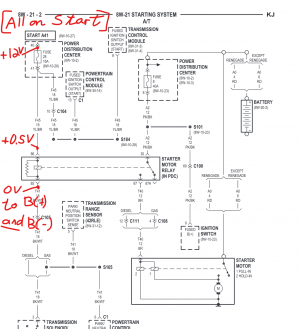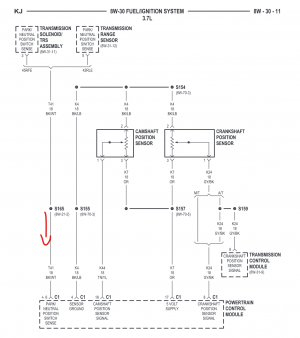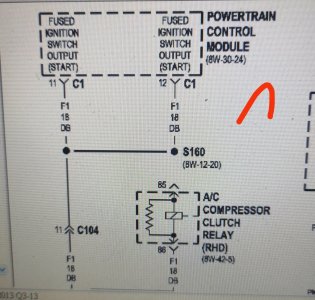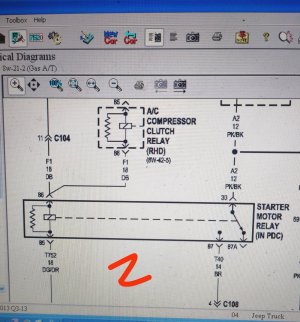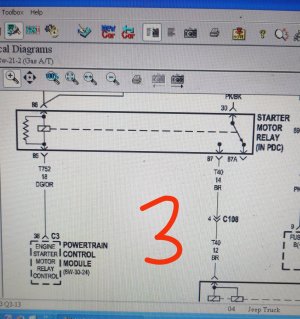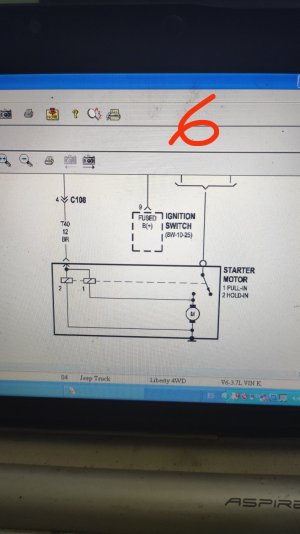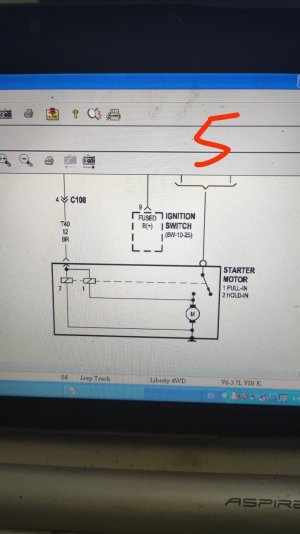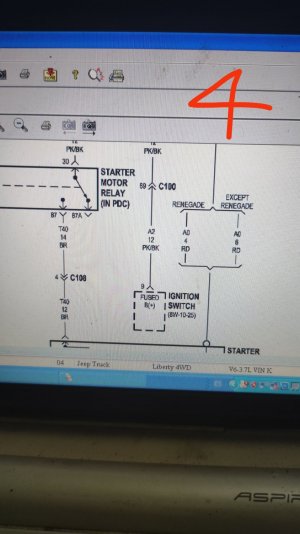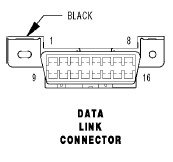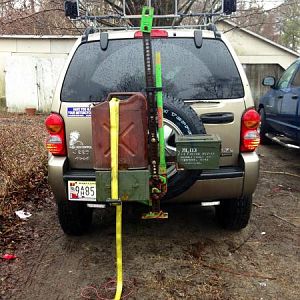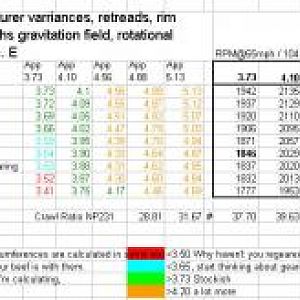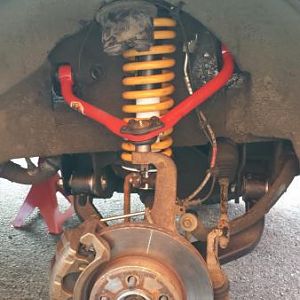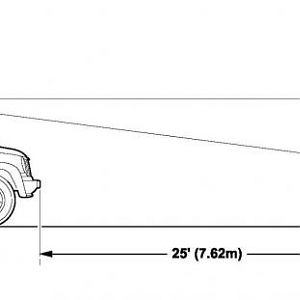Retroshaft
New Member
- Joined
- Oct 21, 2023
- Messages
- 7
- Reaction score
- 4
Hey all,
My 2004 Liberty Gas A/T stopped working out of the blue one morning. It started for half a second then died, wouldn't even crank anymore. Then I tried again a few hours later and then it would sometime crank (but no start) or not crank at all. I tried pulling out a potential code error from the dashboard by doing the quick 3 key turns to on trick, which usually works fine, but this time all I got was the dashboard light flicking on/off 3 times afterwards.
Battery is fine, starter relay is fine, shorting the starter motor directly to the battery make it crank, the engine frame is to ground, also I do have half the gas tank full just in case...
I thought maybe the starting condition weren't met since sometime(!) it cranks but sometime it doesn't... So I pulled up the wiring diagram from a 2003 Liberty and I checked the voltages around the Starter Relay. I found that while trying to start, I get 0.5V on pin 86 and no potential difference in relation to either the positive or negative side of the battery on pin 85 (see attached file!). From my understanding, if everything was fine I should have gotten +12v to ground on pin 86 and +12v to battery positive on pin 85 correct? Is this a sign that something's wrong with the PCM or the park/neutral sensor maybe? Or maybe I got a bad ground somewhere, and in that case, how do I go on checking if that's the case? Any tips on what I should check from there?
My 2004 Liberty Gas A/T stopped working out of the blue one morning. It started for half a second then died, wouldn't even crank anymore. Then I tried again a few hours later and then it would sometime crank (but no start) or not crank at all. I tried pulling out a potential code error from the dashboard by doing the quick 3 key turns to on trick, which usually works fine, but this time all I got was the dashboard light flicking on/off 3 times afterwards.
Battery is fine, starter relay is fine, shorting the starter motor directly to the battery make it crank, the engine frame is to ground, also I do have half the gas tank full just in case...
I thought maybe the starting condition weren't met since sometime(!) it cranks but sometime it doesn't... So I pulled up the wiring diagram from a 2003 Liberty and I checked the voltages around the Starter Relay. I found that while trying to start, I get 0.5V on pin 86 and no potential difference in relation to either the positive or negative side of the battery on pin 85 (see attached file!). From my understanding, if everything was fine I should have gotten +12v to ground on pin 86 and +12v to battery positive on pin 85 correct? Is this a sign that something's wrong with the PCM or the park/neutral sensor maybe? Or maybe I got a bad ground somewhere, and in that case, how do I go on checking if that's the case? Any tips on what I should check from there?


